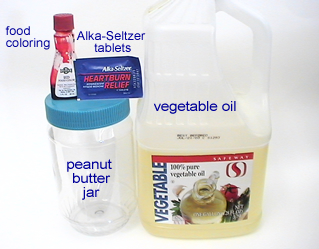 The egg drop is a staple of science classes. I love the egg drop. It is one of the few learning activities where all students can construct an apparatus that doesn’t require a parent to take over the student’s work, doesn’t require expensive or hard to get materials, and hey you might get to see eggs break! I like to do my version of the egg drop at the end of the year when middle school students are getting a major case of spring fever. I call my version of the egg drop, the Egg Saver project. I introduce the project by showing the students the video tittled Understanding Car Crashes: Its Basic Physics. The video, made by the Insurance Institute for Highway Safety, is hosted by a high school physics teacher and demonstrates how inertia, momentum, and impulse are essential in designing safe cars. We next go over the project parameters. The parameters are designed so that students must construct a container in which an egg can be quickly inserted and then extracted after a drop. Also no liquids or packing material are allowed. These rules are implemented so that students design a container that that has to conform to real life requirement like a car. Passengers need to be able to get into and out of a car quickly and passengers in a car are surrounded by liquids. I ban packaging materials so that students are a little more challenged. The size requirement is because I want it to be more car size than tractor trailer size, and it also forces students to be a little more creative. I then give the students the handout (word document) to the project. The project has 5 parts:
The egg drop is a staple of science classes. I love the egg drop. It is one of the few learning activities where all students can construct an apparatus that doesn’t require a parent to take over the student’s work, doesn’t require expensive or hard to get materials, and hey you might get to see eggs break! I like to do my version of the egg drop at the end of the year when middle school students are getting a major case of spring fever. I call my version of the egg drop, the Egg Saver project. I introduce the project by showing the students the video tittled Understanding Car Crashes: Its Basic Physics. The video, made by the Insurance Institute for Highway Safety, is hosted by a high school physics teacher and demonstrates how inertia, momentum, and impulse are essential in designing safe cars. We next go over the project parameters. The parameters are designed so that students must construct a container in which an egg can be quickly inserted and then extracted after a drop. Also no liquids or packing material are allowed. These rules are implemented so that students design a container that that has to conform to real life requirement like a car. Passengers need to be able to get into and out of a car quickly and passengers in a car are surrounded by liquids. I ban packaging materials so that students are a little more challenged. The size requirement is because I want it to be more car size than tractor trailer size, and it also forces students to be a little more creative. I then give the students the handout (word document) to the project. The project has 5 parts:
Part 1: Preliminary Design & Materials List
Students brainstorm and write a brief description of what their egg saver container would look like and how it would work. They also must write a list of materials that they might use. The purpose of this part is to get them started, which is the hardest part. They do this in class so that I know they have something written down.
Part 2: Final Design Specifications
Students have to draw a detailed diagram of their final container that shows the parts, dimensions, and the functions of the parts.
Part 3: Data Collection & Analysis
Students collect data on the mass of the egg and container, height dropped, time from release to impact, velocity, and momentum.
Part 4: Graph of Data
Students construct a line graph that shows momentum versus height.
Part 5: Final Analysis & Conclusion
Students write a paragraph that discusses the results of the experiment.
For an incentive to design a container that works, if a student’s container is successful at the highest height, 14 feet, the student is exempt from doing part 4 and 5.
We do the drops in the classroom with a 10 foot ladder. My classroom has a high ceiling which can accommodate the tall ladder. Watch a video of design that works.
 Tuesday, June 30, 2009 at 7:14AM
Tuesday, June 30, 2009 at 7:14AM 





